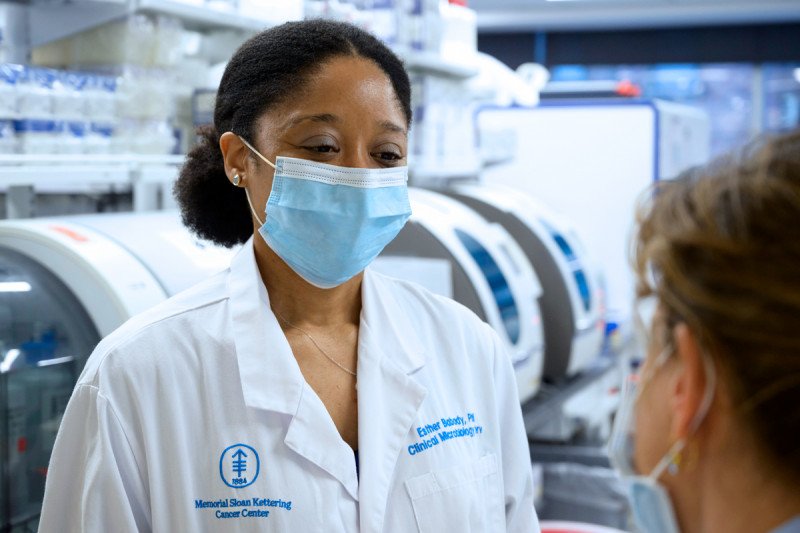
Esther Babady is Director of MSK’s Clinical Microbiology Service.
There are many questions about the variants of COVID-19, and scientists are learning more every day. Researchers are now looking into the Omicron subvariant BA.2.
Esther Babady, Chief of MSK’s Clinical Microbiology Service, is a nationally recognized leader in understanding variants and testing for the virus that causes COVID-19.
Here, Dr. Babady answers questions you may have about variants and how to protect yourself.
What is the Omicron subvariant BA.2, and where has it been detected?
The BA.2 variant is one of four members within the Omicron variant group. All members of the Omicron variant group have multiple mutations in their genome. The Omicron surge in January and February 2022 was primarily driven by the BA.1 Omicron variant but BA.2 is now rapidly spreading in many countries worldwide, including the U.S.
When scientists find variants, it means the virus is changing as it moves from person to person throughout the population. It is completely normal and expected.
Back to topIs BA.2 more contagious? Does it cause more severe disease?
Early reports indicate that BA.2 is more transmissible than BA.1, but there is no evidence so far that it causes more severe disease or an increase in the risk of hospitalization or death.
Back to topShould I be worried about BA.2?
The Omicron variant of COVID-19 is labeled by the Centers for Disease Control and Prevention (CDC) and World Health Organization (WHO) as a “variant of concern.” The CDC says a variant of concern could have several possible attributes, including any or all of the following:
- increased transmissibility
- increased disease severity
- decreased vaccine protection
Since BA.2 belongs to the Omicron variant group, it is also considered a variant of concern.
Read more about how the CDC defines a variant of concern »
Back to topCan the BA.2 variant be detected by current diagnostic tests?
Yes. Although BA.2 is called “the stealth variant,” the mutations in the BA.2 variant have not had any significant impact on commonly used laboratory molecular tests and rapid antigen tests including home tests. Read more about testing »
Back to topWill the current vaccines protect against BA.2?
Though it is too early to tell, current mRNA vaccines (made by Moderna and Pfizer-BioNTech) remain effective at protecting against severe disease and death. Emerging data also suggest that a booster shot provides additional protection. If you haven’t already and are eligible, please don’t wait to get your COVID-19 booster dose.
Back to topIf I already had COVID-19 recently, can I get sick again with the Omicron subvariant BA.2?
In most cases, your lab test won’t typically tell you which variant of COVID-19 you had. But early data suggests that if you had the original strain of Omicron (BA.1) you will have strong natural immunity against BA.2.
Back to topWhat can I do now to protect myself from BA.2 and other variants?
The most important thing you can do is get vaccinated against COVID-19 and get your booster shot. Getting your initial vaccination and following up with a booster shot can protect against severe illness and can stop the virus from spreading easily. Read more about who can get a booster shot and when »
In addition to being vaccinated, you should wear a mask in some situations, stay home when you are sick, and wash your hands frequently. We know that these actions slow the spread of COVID-19, as well as other sicknesses like the cold and flu.
March 18, 2021